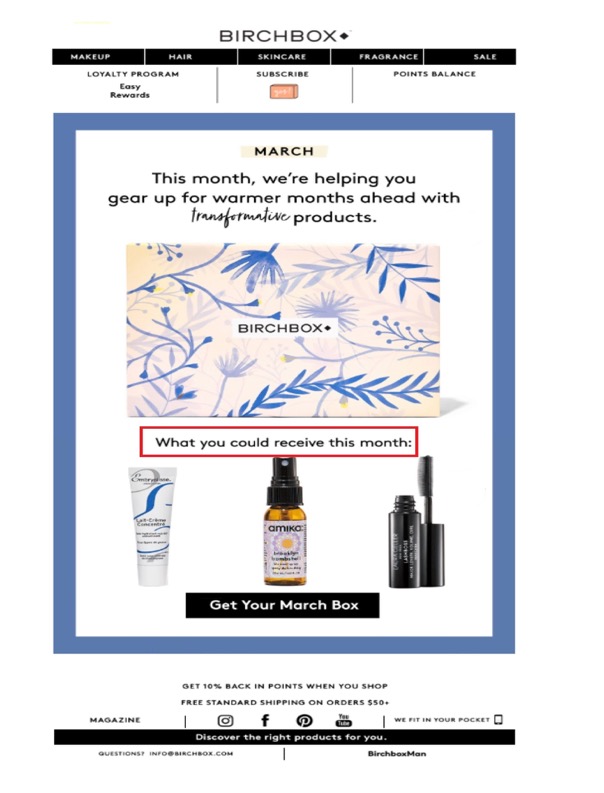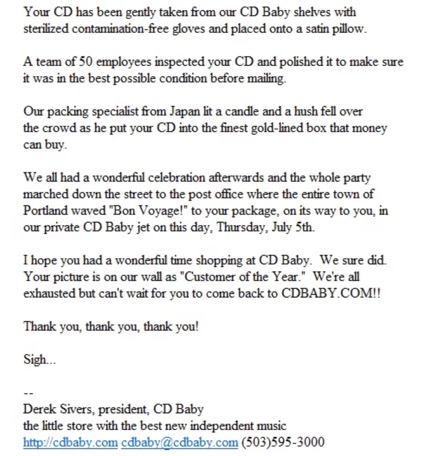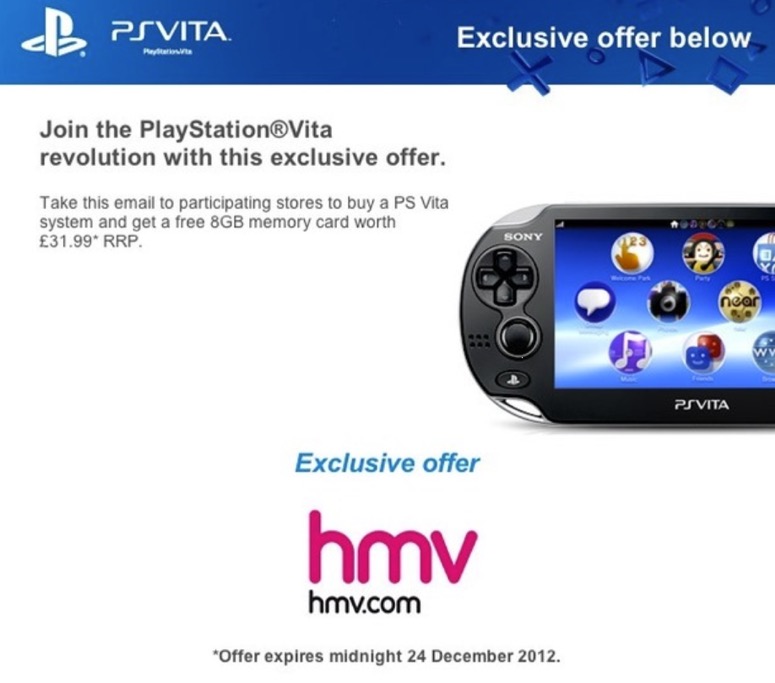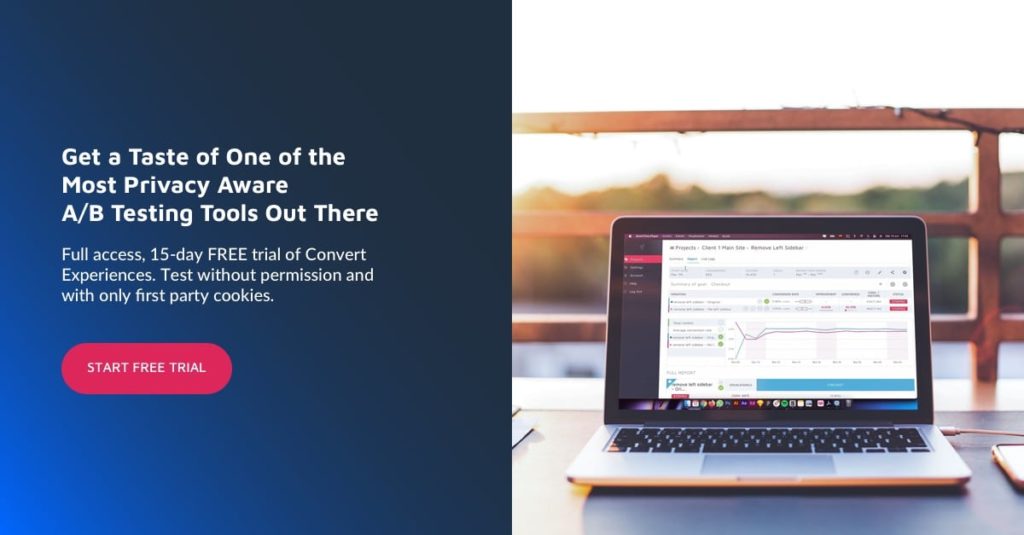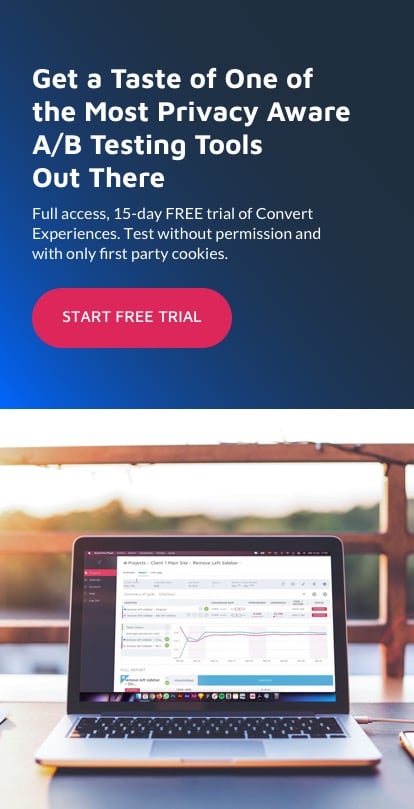4 Principles of Persuasive Email Campaigns
There are many articles written on email marketing, but it is difficult to find one that explores the psychology of persuasion. And it is even rarer to find an article that doesn’t base its advice on personal anecdotes.
This article aims to fill such a gap by introducing you to persuasive principles that are scientifically proven to exert influence on people. You will also be presented with examples that show how these principles are applied specifically to email marketing.
1. Information Gap
Curiosity is a powerful trigger for influencing people, and one way you can induce curiosity is to leave a gap in the information you present. Loewenstein suggests that you will pique people’s curiosity when you present a little bit of information without revealing the full story.
If you look around, it is not difficult to find examples of how the information gap is applied in an email marketing campaign.
Birchbox, for example, invokes the curiosity of their email subscribers by hinting at what they could potentially receive for the month.
In another instance, Birchbox sent an email with a subject title that says, “Take the Leap With This Free Lipstick.” When subscribers saw the title, they naturally wanted to find out more about the lipstick, which translated into higher email open rates.
A case study by Shane Snow, the bestselling author, showed that a short, vague subject line performed better with an open rate of 51.2% than specific subject lines.
An example of this is the Obama email campaign. One of the most successful email subject lines of the Obama campaign is “I will be outspent,” which generated $2.6 million dollars. The subject line piqued his supporter’s curiosity due to its ambiguity.
As you can see in the aforementioned examples, the information gap can be applied in many ways. The most important lesson to take away from this is to present information that is relevant to your email subscribers without revealing everything all at once.
2. Different is Better
Sally Hogshead, the New York Times bestselling author, once said, “different is better than better.” This principle holds true for effective email marketing campaigns.
Let’s look at Dell, for instance.
Dell, the American multinational computer technology company, used GIFs in their emails to increase their revenue by 109%. The use of GIFs made them stand out among competitors since most of them were using written copy and static images in their emails.
Mailgen is another company that differentiated itself with a seemingly minor change. They used symbols in their email titles to increase their open rates by 20.5%. It is important to note that this was before it was cool to use symbols in the email subject line.
CD Baby is yet another company that stood out among its competitors by utilizing the power of humor and storytelling. Because their email was so unique, it instantly mesmerized their audience, and they started sharing it with others. The email below ended up generating thousands of new customers for CD Baby.
No rule is set in stone when it comes to differentiating yourself from your competition. You want to observe what your competitors are doing and find a way to stand out from the crowd.
For example, if all of your competitors are adding symbols in their email subjects, you should perhaps split-test between an email that includes symbols and another one that doesn’t.
Split-testing should be an integral part of any business that’s looking to grow. Luckily, it has become easier than ever to incorporate split-testing into your business with tools like Convert Experiences.
To conclude, it’s a good idea to try doing something that’s completely different from what all of your competitors are doing. But make sure you split-test to confirm that what you are testing is, in fact, bringing you a better result.
3. The Mere Exposure Effect
Zajonc originally proposed the idea of mere exposure effect in the 60s, and it has since been widely accepted as a real and robust phenomenon.
The effect shows that a person can develop preferences for certain stimuli by merely being exposed to them repeatedly. One thing that is quite striking about this phenomenon is that the person doesn’t even have to interact with the stimulus to develop a preference.
For example, if the person is repeatedly exposed to the same banner ad, he may develop a stronger preference for it, although he may not even be consciously aware of the banner ad that was shown to him.
So how can you use the mere exposure effect in your email marketing campaigns?
One example is follow-ups.
You may not get a response from the first email, or even the second email you send. But that doesn’t mean your efforts were useless. The mere exposure effect will still be at play.
Some business owners are reluctant to send frequent emails because they don’t want to annoy their email subscribers.
But whether you are emailing your subscribers, or personally following up with a prospect to secure a business deal, many case studies show that sending frequent emails actually does more good than harm.
Examples
Ambition used follow-up emails to increase their open rates. They only received six replies the first time they sent emails to 578 prospects. They continued to follow-up with non-responders throughout a 6-week period and ended up getting 67 additional leads.
The story of the CEO of close.io is especially impressive. He followed up with a prospect 48 times before securing a meeting, which eventually turned into a business deal.
Obama’s email campaign is another famous example that demonstrates the effectiveness of frequent emails. His campaign managers noticed that the more emails they send, the higher ROI they generated in return.
Finally, Brian Dean from Backlinko suggests that one follow-up can boost replies by 65.8%.
There are two things you want to keep in mind if you do decide to amp up your email frequency.
- Make sure your email offers value to your email subscribers. Nobody wants to receive salesy daily emails.
- Personalize your emails, so your subscribers don’t feel like they are receiving mass emails.
4. Personalization
You may have heard about the importance of personalizing emails, but why is personalization so effective? It is effective because we are all inherently self-interested. An email that is relevant to us captures our attention far more than an email that is written for a general audience.
Whether you are sending an email to your business prospect or your email subscribers, no one enjoys receiving a spammy email that appears to have been sent to thousands of other people.
Indeed, many studies confirm the power of personalized emails:
- Jupiter research found relevant emails drive 18 times more revenue.
- Hubspot conducted research that showed segmentation generates 8% CTR as opposed to 3% CTR.
- According to the Lyris Annual Email Optimizer Report, 39% of marketers who segmented their email list experienced a higher open rate.
There are also many cases of companies successfully implementing personalization into their email marketing campaign.
U-sell increased their open rate by 24.5% by making their email titles transactional and relevant. One email subject line read, “Your old device is saying, only one week left.” This subject line compelled their email subscribers to click on the email because the title directly spoke to them.
Sony customized their emails for PS3 owners who are subscribed to Playstation Plus and increased their ROI 580 times.
Vero increased their ROI by 450% by breaking down their audience into smaller segments. This allowed them to better customize their emails for each segment of their audience.
Closing Thoughts
Email marketing can be the biggest source of ROI for your business, but you also have more competition than ever with an average professional receiving 120 new emails a day and responding to only 25% of them.
Many factors can potentially affect the performance of your email marketing campaigns, such as the quality of your email hosting, and deliverability. But more importantly, you never want to forget that you are talking to another human being.
By effectively utilizing persuasion triggers, such as the ones we’ve discussed in this article, you should be able to gain a competitive edge over others in a crowded market.
Edited By
Carmen Apostu

